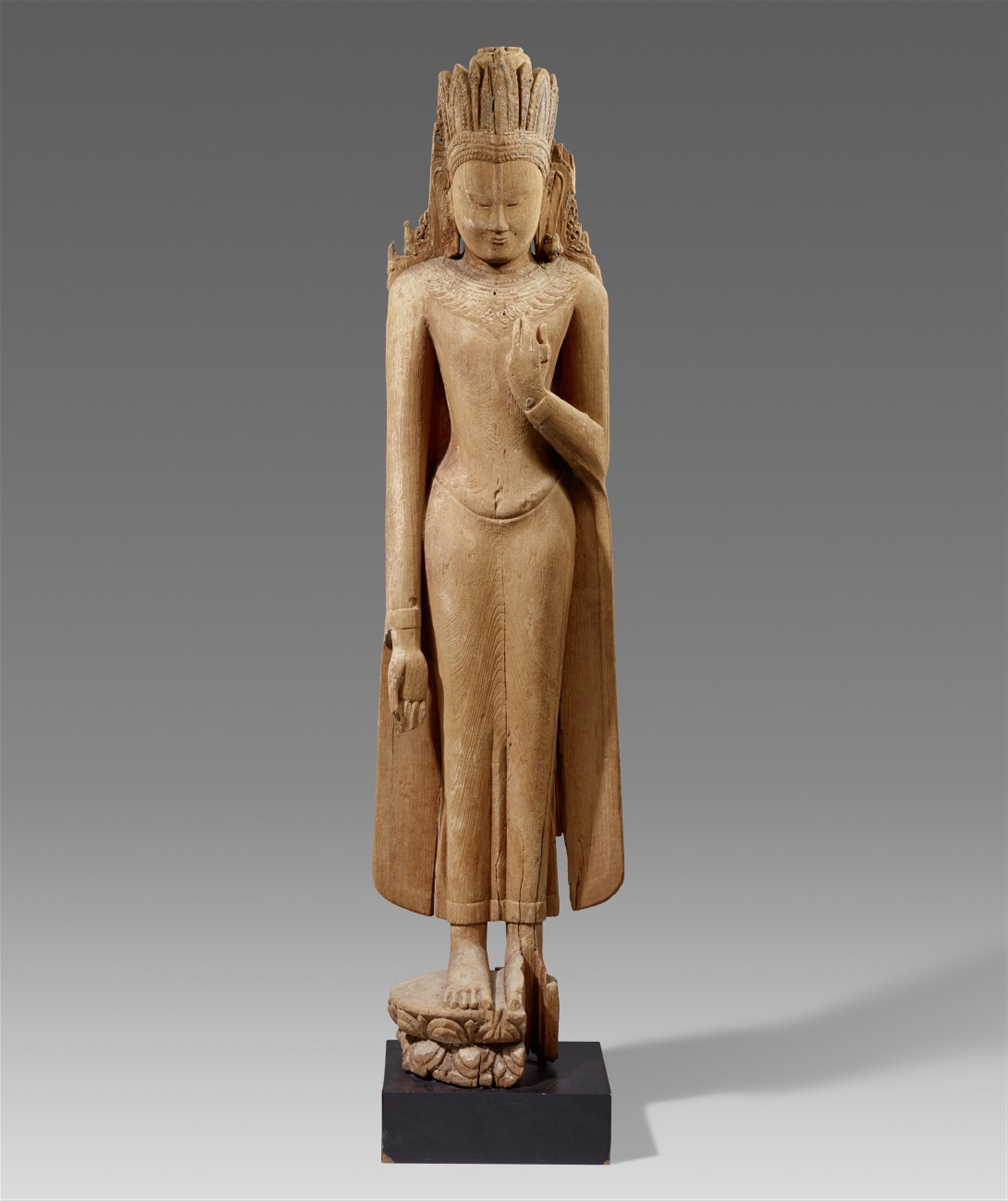A large Bagan teak wood figure of a crowned and bejeweled Buddha. Burma, Bagan (Pagan). 12th/13th century
Standing on a small lotus base wearing a long-sleeved robe, with an ornate necklace, the left hand raised to the chest and holding either a wedge of cloth or a small scripture scroll, the right hand hanging down in the varada mudra with palm turned outward, the crown consisting of several lancet shapes and ornamental flanges behind the ears. Remains of gesso. The tiered ornament above the ushnisha missing, some other losses. Mounted on a black base.
189.9 cm
The image of the crowned and bejeweled Buddha has been variously interpreted. The historical Shakyamuni is usually shown as a simple mendicant clad in a monk's robe. The elaborate ornamentation of the Pagan Buddhas suggest that they are representations of Maitreya, the future Buddha waiting as a crowned and jeweled Bodhisattva for his rebirth. There is also some indication that these sculptures may be idealized portraits of deceased kings and nobles of Pagan. Some of the greatest rulers of their era left inscriptions stating that they considered themselves enlightened Buddhist sovereigns who had acquired exceptional merit during past lives and would eventually be reborn as Buddhas. Both interpretations may apply: The image could represent a historical king reborn as Maitreya.
This sculpture represents the Buddha as he was depicted in eleventh- through thirteenth-century Pagan. A number of very similar standing crowned Buddha images, carved from single tree trunks, have been found in temples in the city of Bagan (Pagan) in Myanmar (Burma). Bagan was once the capital of a large and powerful kingdom. The Burmese temple city of Bagan underwent a spectacular flowering during the eleventh to thirteenth centuries. To embellish the city's numerous brick temples, Buddhist images were created in paint, metal, stone, and wood. Only a small group of figures from Pagan relating to this crowned Buddha survives. Several are housed in American Museum such as the Metropolitan Museum of Art, New York (acc. no. 1992.382), The Los Angeles County Museum, and the Asian Art Museum San Francisco (acc. no. B86S7).
Provenance
Private collection, Southern Germany
Literature
Compare similar figures ill. in: Sylvia Fraser-Lu, Buddha images from Burma. Part 3: Wood and Lacquer, in: Arts of Asia, vol. 11, no. 3 (May-June 1981), p. 129-130 and Sylvia Fraser-Lu und Donald M Stadtner, Buddhist Art of Myanmar, Asia Society Museum, New York 2015, no. 21, p. 130-131

